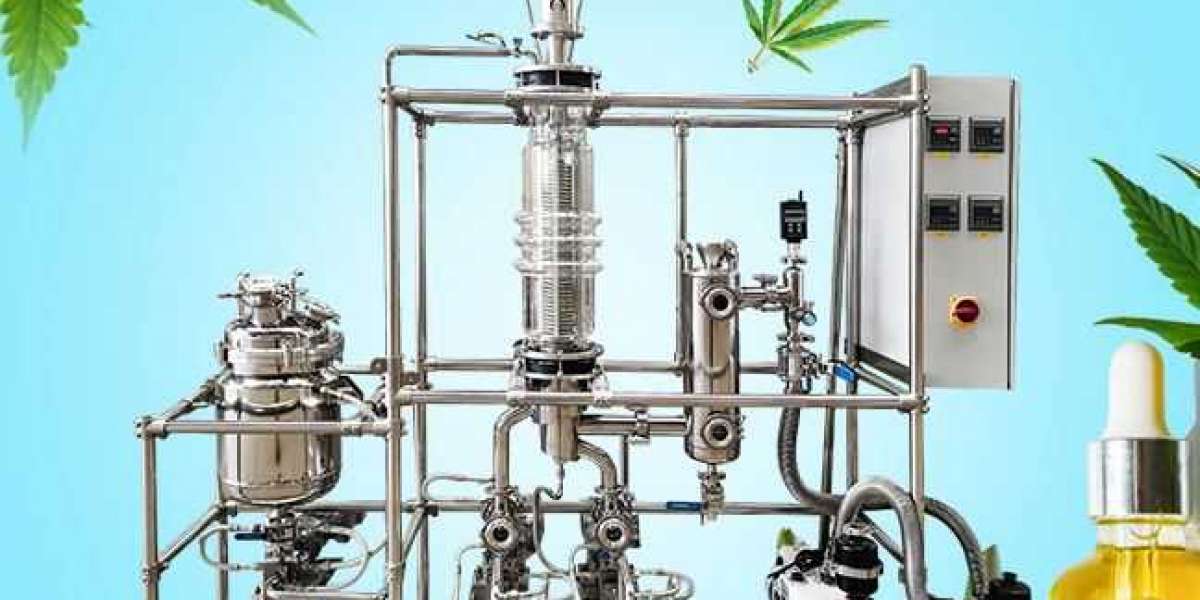Original Title: Industrial Crystallization Technology Development History, Current Situation, Technology Detailed Explanation This Is Also Missed? The development of modern crystallizers reflects the progress of mathematical models of crystal growth and nucleation theory. Today, we bring you an overview of the development of industrial crystallization at home and abroad in the past 20 years, as well as some major industrial crystallization methods. 1. History of development At the end of the 19th century and the beginning of the 20th century, vacuum crystallizers were mostly horizontal tubular evaporation equipment, which consisted of cast iron shells, horizontal tubes and tube sheets, and crystallized salt filters. The crystalline salt filter is located in the lower part of the vessel, and the crystal grains are deposited in the filter during the evaporation of the solvent. At the end of the topping operation period, the crystallized salt filter can be separated from the crystallizer body, the liquid is discharged through the bottom screen, and the crystal grains can be discharged through the side outlet. The crystallizer is an evaporation type product forming device, and the circulation process is gentle. During the evaporation process, the grains are deposited through the bottom conical funnel into the underlying crystalline salt filter. The location and operation of the crystalline salt filter facilitates the removal of the coarsest grains, while the finer grains are recycled for further growth. Because the evaporation process takes place around the tube array. As a result, a large amount of grain deposition always occurs between the inner wall of the crystallizer and the tube array. Therefore, the application of crystallization process has a long history. 2. Application status at home and abroad Expand the full text Crystallization is currently recognized as the best industrial process. As a purification method, the structure of crystallization equipment is relatively simple and the operation is not complicated, so it is also widely used in the production of medicine, pesticides, dyes and so on. In many cases, substances with similar boiling points, azeotropes and heat-sensitive substances are not suitable for separation by distillation, and crystallization can be used to take advantage of the fact that their freezing points are generally different. From the point of view of energy saving, the latent heat of melting is much smaller than the latent heat of evaporation for a certain substance, and the energy consumption is more reasonable. Crystallization is the process by which a solid substance is precipitated in a crystalline state from a vapor, solution, or molten substance. Most commonly encountered in industry is solution crystallization. Although crystallization is widely used, its theoretical development is still immature. In recent years, the popularization of industrial crystallization technology, the development of new fields and the research of application theory are very active in the world. In China, with the development of petrochemical, fine chemical,winterization filtration, biochemical and pharmaceutical industries, new industrial crystallization technologies are urgently required. Compared with the situation and demand of rapid economic development in China, the development and promotion speed of new industrial crystallization technologies urgently needs to be improved, and it is just around the corner for China's industrial crystallization industry to enter the stage of crystallization engineering. The new technology of industrial crystallization mainly focuses on melt crystallization, reactive precipitation crystallization and solution crystallization; Internationally, the new trend of international crystallization development is to extract high-purity organic substances by melt crystallization, and to prepare biochemical substances (including medicine), ultrafine particles and functional crystals by reactive precipitation crystallization. In order to develop the design of crystalline particles, the mechanism research has recently focused on changing the molecular arrangement to achieve the exploration of different crystal forms. 3. Classification and Introduction of Industrial Crystallization Technology Because of the diversity of crystallization processes, there is no strict and unified classification method so far. Generally, according to the characteristics of crystallization phase change, industrial crystallization can be divided into three categories: solution crystallization, melt crystallization and direct vapor crystallization. According to the crystallization technology,decarboxylation after extraction, it can be divided into two aspects: general crystallization and recrystallization. As a preparation method, general crystallization (including batch or continuous crystallization, single-stage and multi-stage crystallization) is often used. As a method of separation and purification, that is, the separation of pure components from a relatively complex mixture, it is not possible to rely solely on the general scheme, and the recrystallization technique is often used. The crystallization step is repeated many times from a solution or a melt according to a certain scheme. When the number of repeated steps is sufficient, the necessary separation purity can be achieved. According to the requirement of separation, many kinds of recrystallization schemes have been proposed, which can be roughly divided into simple recrystallization and fractional crystallization. In the following, industrial crystals are classified and discussed according to the characteristics of phase transformation, while referring to the characteristics of other aspects. 1. The solution crystallizes Solution crystallization is divided into six basic types: (1) crystallization by cool: this method produces supersaturation by lower that temperature. (2) Evaporative Crystallization: This method produces supersaturation by evaporation of the solvent. (3) Vacuum Crystallization: This method produces supersaturation by flashing and evaporation of the solvent. (4) Reactive Crystallization: This process produces supersaturation due to exothermic removal of the solvent. (5) crystallization of other precipitate: this method produces supersaturation due to that addition of substance to reduce solubility. (6) Pressurized crystallization: This method produces supersaturation by changing the pressure and reducing the solubility. (7) Isoelectric crystallization: This method produces supersaturation by controlling the pH and reducing the solubility. 2. However, it is customary for crystalline substances to be classified according to their solubility curves It can be roughly divided into three types. (1) Type 1 of solubility curve: KNO3, NaNO3, NH4NO3, CaSO4, sugar, etc. (2) Form 2 of solubility curve: KCl, NaCl, (NH4) 2SO2, K2SO4, terephthalic acid, etc. (3) Type 3 of solubility curve: Na2SO4, cbd crystallization equipment ,wiped film evaporator, ZnRO4H2O, CaSO4, MgSO4H2O, FeSOH2O4, etc. Different types of crystalline forms are suitable for different types of substances. In that case of clas 1 of the above classification, the solubility thereof varies greatly with temperature and is suitable for crystallization by cool. The solubility of the second kind of substance changes little with temperature, which is suitable for evaporation crystallization. Many chemical substances are prepared in industry by chemical reactions between gases or liquids to precipitate a solid crystalline product. The solvent in the system is generally driven away by means of the evolved heat of reaction. This method is called reactive crystallization. This method is particularly useful in industries that produce waste gases of value for recovery. For example, NH3 is recovered from coke oven exhaust gas, and the method of reacting NH3 with H2SO4 to crystallize to produce (NH4) 2SO4 is used. In other precipitation crystallization methods, there are different routes of salting-out crystallization, extraction crystallization, emulsification crystallization and addition crystallization. Salting-out crystallization is characterized by the addition of certain substances to the solution, which can greatly reduce the solubility of the solute in the solvent, resulting in crystallization. Water crystallization also belongs to this category, as long as the amount of water added is controlled, one of the solutes can be separated from the organic solvent dissolved with water. Extractive crystallization may also be considered for the separation of hydrocarbon isomers or mixtures with similar boiling points. It is characterized by adding a third component to the binary system to change its solid-liquid phase equilibrium curve, and then selecting a recrystallization scheme to achieve the separation of the two components. 3. The melt crystallizes Cooling crystallization is also a major type of crystallization from a melt. For example, the Newton Chailibers process for benzene purification is a direct cooling process in which impure benzene is directly mixed with a frozen saline. The resulting suspension is centrifuged to separate benzene crystals and a mixture of saline and mother liquor. After standing, the mother liquor and saline can be separated. For example, the Proabd refiner and the aforementioned Brodie purifier, which can be used for Cai refining, also belong to the cooling crystallizer. Countercurrent fractional crystallization is a promising type of melt crystallization. Jet crystallization is similar to the spray drying process and is a means of solidifying the solute and melt of a very concentrated solution. Strictly speaking, the solid solidified by spraying does not necessarily form a good crystal structure, and the shape of the solid depends largely on the shape of the nozzle. The drawing process of polymer melt spinning also forms partial crystalline structure, which belongs to this type in a broad sense. At present, the melt crystallization devices that have been industrialized in the world are divided into compound suspension crystallization type and gradual freezing type. Comparing these two kinds of crystallization devices, the former is more suitable for large-scale production of ten thousand tons, but it has the disadvantages of complex equipment structure, high difficulty in scale-up, and limitations in the application of separated systems; the latter is suitable for medium and small-scale production, but it overcomes other shortcomings. 4. Direct crystallization with steam "Sublimation" process, strictly speaking, refers to the process of directly changing solid phase into vapor, but in industrial applications, the process of directly changing solid phase into vapor is also called sublimation process. In fact, the latter step is the process of direct crystallization from vapor. This sublimation process is generally divided into three types: simple, vacuum, and entrainment. The only difference between these three types is the driving force to achieve the first step of "solid-vapor". The "vapor-solid" step is condensed by cooling. The so-called entrainment type is also called carrier type, that is, the solid gasification process is completed with the help of the blowing of additional inert gas. 5. Precipitation (Crystallization) This is an unusual industrial crystallization method, but in the traditional production of fertilizers, pesticides, reagents and pharmaceuticals, precipitation is one of the key production operations. With the development of modern fine chemical industry, biochemical industry, pharmaceutical industry, information engineering, special coatings and pigment industry, not only the demand for various precipitation products is increasing day by day, but also the requirements for the morphology of precipitation (including the crystal form, crystallinity and particle size distribution of microcrystals) are getting higher and higher. Many patent technologies have been formed in foreign countries, such as the production of ultrafine powder precipitation technology, the extraction of precious metals by emulsion liquid membrane crystallization technology, and the manufacture of ultrafine catalysts. The development of new industries has stimulated competition in the field of research and development. In that past five year, there have been many articles on the morphology and proces dynamics of precipitation, especially on the kinetics of coagulation and aging, the effect of macromixing and micromixing on the morphology of precipitation under stirring, and the mechanism analysis and engineering research on heat and mass transfer of particle formation. Because it is different from the general crystallization process, in addition to the nucleation and growth crystallization kinetics, the coagulation and aging phenomena after the primary nucleation are the key factors to determine the final crystallization morphology, so it is much more complex to complete the design engineering of fine particles than the general large intact crystals. This is the goal of precipitation research, in this regard, the recent practice of British and Japanese scholars is more detailed. 4. Future Development of Crystallization Technology In thousands of factories using crystallization units in China, the crystallization technology is still at the level of the 1950s abroad. The urgent task is to develop, research, update and popularize new crystallization processes and equipment. If the outlook of the industrial crystallization sector does not change as soon as possible, it will become a bottleneck factor for China's industry to continue to develop at a high speed. China's industry should do the following: (1) Accelerate the organization and support of the major subject of crystallization application theory research, accelerate the improvement of the level of crystallization application theory research, and prepare for the development and development of high and new technology in the 21st century. It is suggested that the State Science and Technology Commission and the State Planning Commission, on the one hand, continue to organize major industrial crystallization technologies, and on the other hand, call for and set off an upsurge in the development and popularization of new crystallization technologies in the industrial sector, striving to basically reach and partially surpass the international level in China's industrial sector within five years,wiped film distillation, so as to ensure that China's industrial crystallization sector can gain a firm foothold in future international competition. (3) Vigorously strengthen international scientific and technological exchanges and cooperation in the field of industrial crystallization, guide and encourage the scientific community and industry to carry out transnational scientific and technological cooperation and exchanges, and expand the content of international cooperation and exchanges from different levels and channels. (Source: Huan Gong 707) Return to Sohu to see more Responsible Editor:. toptiontech.com
EddieGWard
8 Blog posts









